
Roots
The quiet moments of rest, when the world outside fades, often bring us back to simple, yet profound, acts of care. For many with textured hair, this nightly ritual includes the gentle slip of a bonnet over curls, coils, or braids. It is a gesture passed down through generations, a silent promise of protection against the harsh realities of friction and moisture loss that can plague our delicate strands.
Yet, beneath this seemingly benign practice, a whisper of concern sometimes arises ❉ can sleeping in a bonnet, this very act of preservation, paradoxically lead to scalp issues? This inquiry leads us not to a simple yes or no, but into the very foundational elements of our hair and scalp, inviting a deeper consideration of the intricate balance that maintains their vitality.
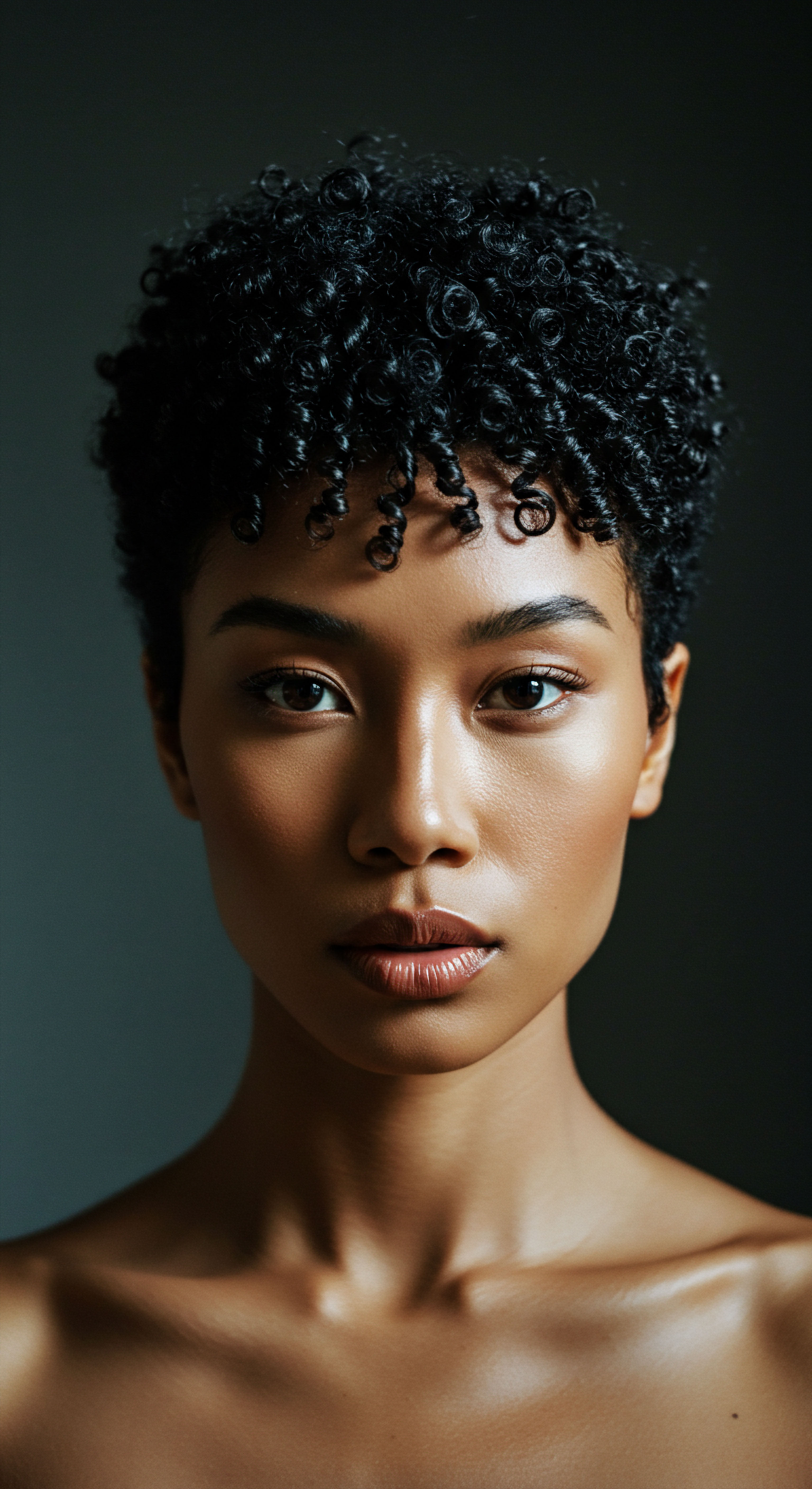
Hair’s Unique Structure and Needs
The distinct beauty of textured hair lies in its varied curl patterns, from gentle waves to tightly wound coils. This inherent architecture, while captivating, also presents unique considerations for its care. Unlike straight hair, the elliptical or oval cross-section of textured hair, coupled with its curved follicular path, renders it more susceptible to dryness and breakage.
Natural oils, known as sebum, produced by the scalp, face a more challenging journey traversing the bends and turns of curly strands, often leaving ends drier and the scalp prone to accumulation. This foundational understanding of textured hair’s biological specificities is paramount when considering any hair care practice, including the use of bonnets.
The unique architecture of textured hair, with its elliptical shaft and curved follicle, influences its inherent moisture distribution and susceptibility to breakage.
The cuticle, the outermost protective layer of the hair shaft, is particularly vulnerable to mechanical stress. For textured hair, this susceptibility is amplified due to the natural bends and turns that expose more of the cuticle to friction. When the cuticle is compromised, hair becomes more porous, losing moisture more readily and becoming prone to frizz and tangles. A bonnet’s purpose, in its purest form, is to shield this delicate cuticle from the abrasive forces of pillows and bedding, thereby preserving the hair’s integrity and hydration.
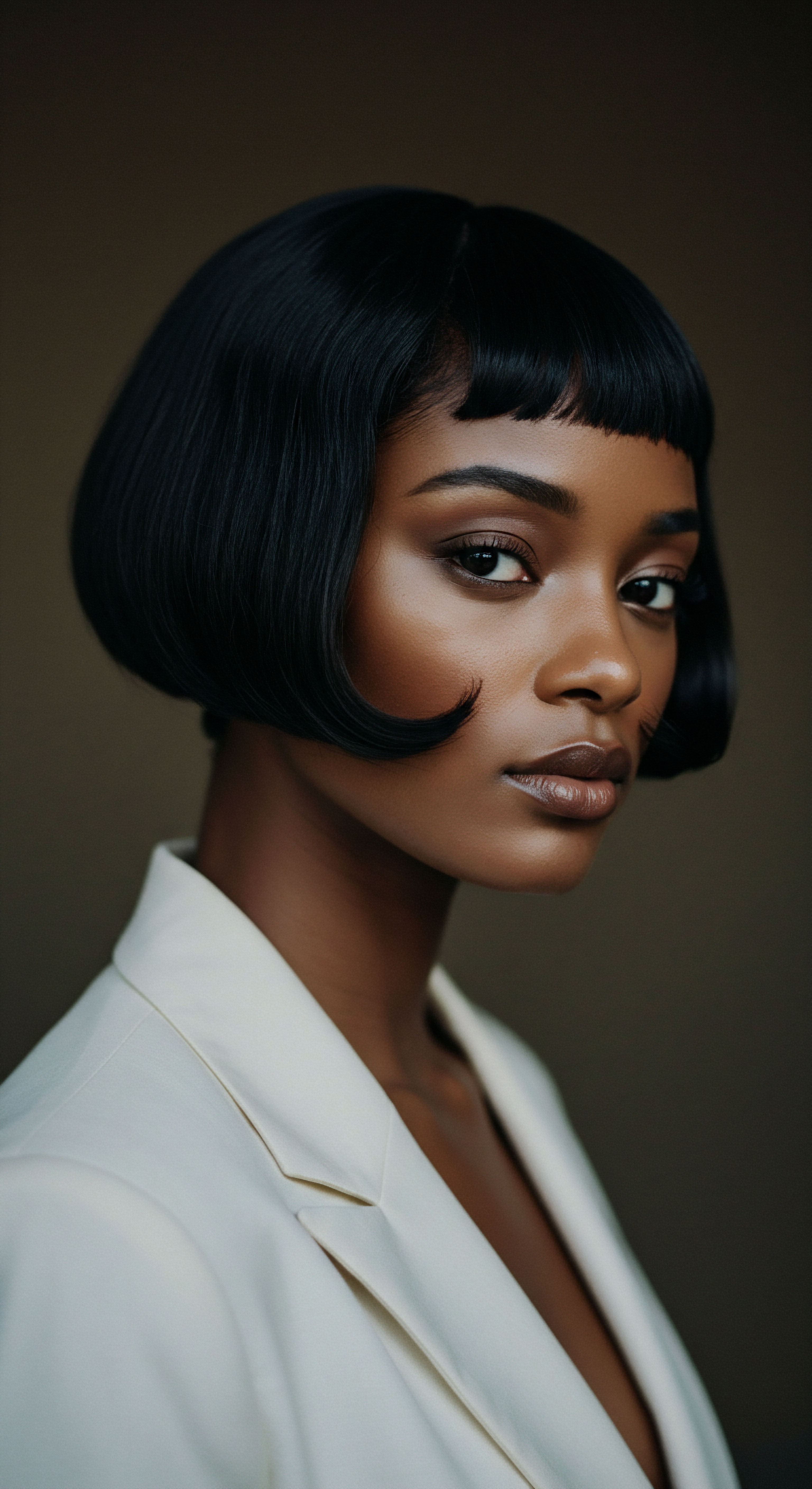
The Scalp’s Living Ecosystem
Beneath the crown of hair lies the scalp, a vibrant ecosystem teeming with a diverse community of microorganisms—bacteria, fungi, and other microscopic life forms—collectively known as the scalp microbiome. This intricate balance of microbes plays a significant part in maintaining scalp health, contributing to pH regulation, antimicrobial defense, and even influencing hair development. A healthy scalp microbiome acts as a shield, capable of defending against and recovering from external aggressions. When this delicate balance is disrupted, a state known as dysbiosis, issues such as dandruff, irritation, and even certain forms of hair loss can arise.
Environmental factors, product choices, and personal habits all play a role in shaping this microbial landscape. Understanding the scalp as a living, breathing environment, rather than just a foundation for hair, shifts our perspective on how head coverings might interact with its delicate equilibrium.

Hair Growth Cycles and Influencing Factors
Hair growth is a cyclical process, with each strand moving through distinct phases ❉ anagen (growth), catagen (transition), and telogen (resting). Factors such as genetics, nutrition, stress, and overall health profoundly influence these cycles. While bonnets do not directly impact the biological rate of hair growth, they contribute to an environment that either supports or hinders healthy hair retention by minimizing breakage. A healthy scalp provides the optimal foundation for these cycles to unfold without hindrance.
The integrity of the hair follicle, the small organ responsible for producing hair, is central to this process. Any persistent irritation or physical stress to the follicle can disrupt its normal function, potentially leading to compromised growth or conditions such as folliculitis. The choice of nighttime head covering, therefore, holds the potential to either protect this vital structure or, if ill-suited, contribute to its distress.

Ritual
The practice of covering one’s hair at night, often with a bonnet, is a deeply ingrained custom for many with textured hair. It speaks to a shared wisdom, a practical understanding of how to safeguard curls, coils, and waves from the rigors of sleep. Yet, within this seemingly simple act, nuances arise that determine whether this ritual truly serves as a protective measure or inadvertently creates conditions for scalp concerns. This section seeks to unravel the complexities of this nighttime tradition, offering insights into the materials, fit, and maintenance that transform a mere covering into a genuine sanctuary for both hair and scalp.

The Nighttime Sanctuary ❉ Essential Sleep Protection and Bonnet Wisdom
The hours we spend asleep are critical for hair health. The friction generated by tossing and turning on cotton pillowcases can lead to significant mechanical damage, causing frizz, tangles, and breakage, particularly for delicate textured strands. A bonnet acts as a soft barrier, allowing hair to glide rather than snag, preserving moisture and preventing mechanical stress. However, the efficacy of this protection, and its impact on scalp well-being, hinges on thoughtful selection and consistent care.
A bonnet, when chosen and cared for mindfully, provides a vital shield against nightly friction and moisture loss for textured hair.

Choosing the Right Material
The fabric of a bonnet holds significant sway over its effect on the scalp.
- Silk ❉ Recognized for its natural protein fibers, silk offers exceptional breathability and a smooth surface. This minimizes friction against hair and scalp, reducing the likelihood of irritation and hair breakage. Silk’s natural moisture-wicking properties also help regulate temperature, keeping the head comfortable. Its hypoallergenic qualities make it a favorable option for those with sensitive skin.
- Satin ❉ Often made from synthetic materials like polyester, satin mimics silk’s smooth feel but typically offers less breathability. While it still reduces friction better than cotton, satin can trap more heat, which might lead to discomfort in warmer environments or for individuals prone to sweating.
- Cotton ❉ While comfortable for everyday wear, cotton is generally discouraged for sleep bonnets due to its absorbent nature, which can strip hair of its natural moisture, and its coarser texture, which increases friction.
A comparative examination of silk and satin reveals important differences for scalp well-being:
| Material Silk |
| Breathability High (natural fibers allow airflow) |
| Friction Reduction Very High (smooth texture) |
| Moisture Retention High (helps retain natural oils) |
| Hypoallergenic Qualities High (natural protein fibers) |
| Material Satin |
| Breathability Moderate (synthetic, can trap heat) |
| Friction Reduction High (smoother than cotton) |
| Moisture Retention Moderate (less effective than silk) |
| Hypoallergenic Qualities Variable (depends on synthetic blend) |
| Material Choosing silk or satin bonnets over cotton is a common recommendation for preserving hair health during sleep. |

The Importance of Fit and Tension
The fit of a bonnet is perhaps the most critical factor influencing scalp health. A bonnet that is too tight, particularly around the hairline, can exert continuous pressure on hair follicles. This constant pulling can lead to a condition known as Traction Alopecia, a form of hair loss caused by repeated tension on the hair and scalp. While bonnets themselves are not inherently the cause, improper use, specifically an overly snug fit, contributes to this risk.
Signs of a bonnet being too tight include:
- Redness or Irritation along the hairline upon removal.
- Headaches or discomfort.
- A feeling of constant pulling or tension.
- Noticeable thinning or breakage around the edges of the hair.
The goal is a fit that is secure enough to stay on through the night but gentle enough to leave no marks or sensations of strain. A loose, comfortable band, or one that is adjustable, is ideal.
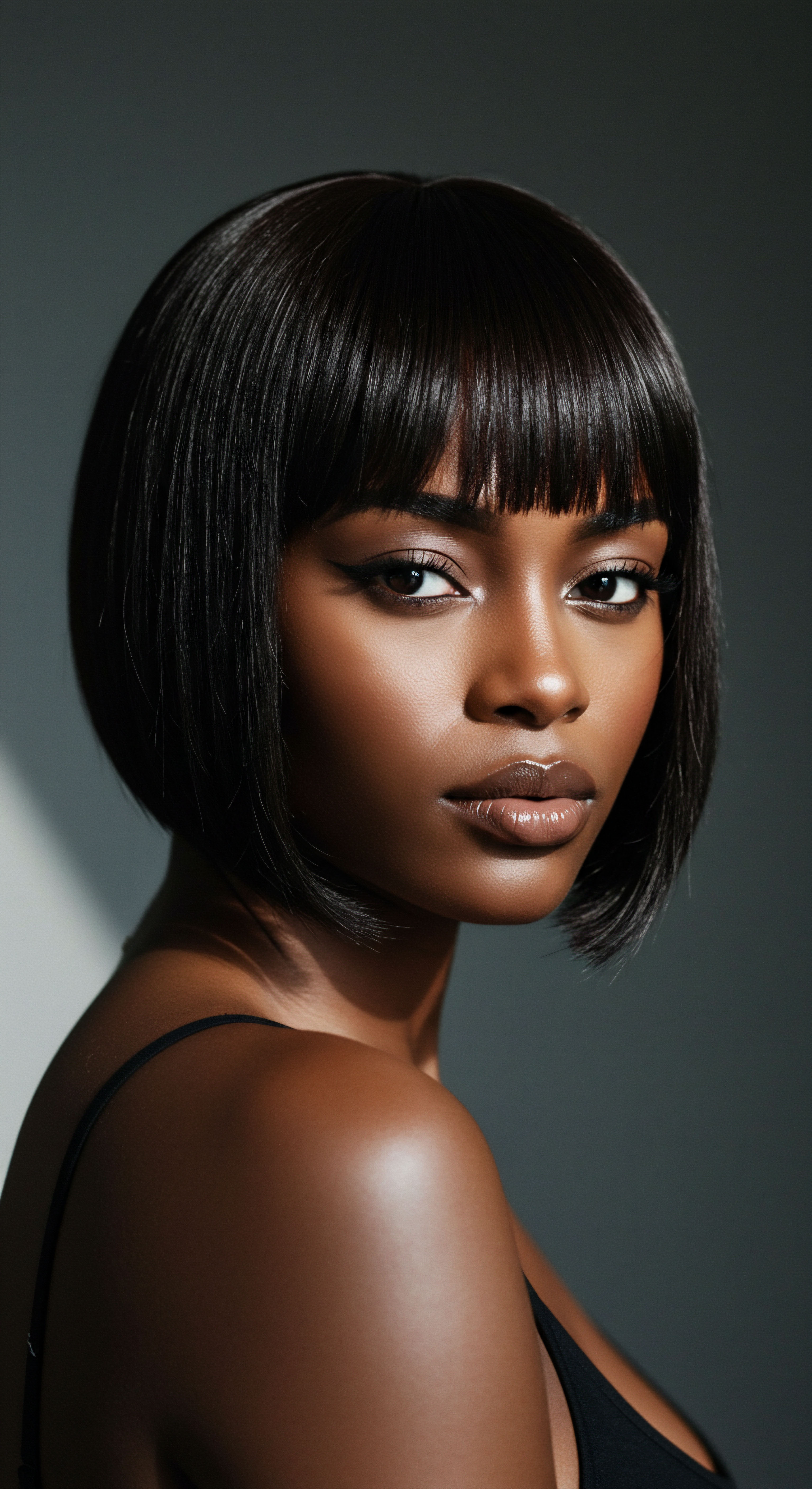
Maintaining a Clean Bonnet
A bonnet, like any fabric accessory that comes into close contact with the skin, accumulates oils, product residue, sweat, and environmental particles over time. A dirty bonnet can become a breeding ground for bacteria and fungi, which can then be transferred to the scalp. This accumulation can lead to various scalp issues, including:
- Dandruff ❉ An imbalance in the scalp microbiome, often involving an overgrowth of certain yeasts like Malassezia, can be exacerbated by a dirty environment.
- Scalp Acne or Folliculitis ❉ Blocked pores and inflamed hair follicles can result from oil and bacteria buildup.
- Itching and Irritation ❉ These are common symptoms of an unhealthy scalp environment.
Regular washing of bonnets, preferably with a mild, hypoallergenic detergent, is paramount to prevent such issues. The frequency of washing should correspond to individual scalp oiliness and product use, but generally, once a week is a good starting point.

Considering the Duration of Wear
While bonnets are primarily for nighttime use, some individuals may wear them for extended periods during the day. Prolonged wear, especially of less breathable materials, can create a warm, humid environment that may not be ideal for continuous scalp exposure. This occlusive effect, while beneficial for medication absorption in certain dermatological treatments, can also alter the scalp’s natural pH and moisture levels if sustained without breaks. Allowing the scalp to breathe and experience open air is a simple yet effective practice for maintaining its balance.

Relay
Beyond the immediate considerations of material and fit, the question of whether sleeping in a bonnet can lead to scalp issues invites us into a more profound conversation, one that intertwines the biological intricacies of our scalp with cultural practices and environmental influences. It is a dialogue that moves beyond simple cause and effect, urging us to consider the interconnectedness of our hair care choices with the very foundations of our well-being. What unseen dynamics might be at play beneath the silken dome, and how do they interact with the unique biology of textured hair?

The Scalp’s Microclimate Under Occlusion
When a bonnet covers the head, it creates a localized microclimate around the scalp. This microclimate differs significantly from the open air, particularly in terms of temperature and humidity. Non-breathable fabrics can trap heat and moisture, leading to an increase in scalp temperature and humidity.
This effect, known as occlusion, is well-studied in dermatology for its ability to enhance the penetration of topical medications by increasing stratum corneum hydration and altering skin barrier function. However, prolonged, unintended occlusion can have less desirable consequences for the scalp.

Does Increased Humidity Alter Scalp PH?
The scalp’s natural pH typically falls within a slightly acidic range, around 5.5, which is crucial for maintaining a healthy skin barrier and supporting the beneficial scalp microbiome. Studies on skin occlusion have shown that it can lead to an increase in skin surface pH, making it more alkaline. While direct, long-term studies on bonnet-induced pH changes are limited, the principle of occlusion suggests that a consistently humid and warm environment beneath a non-breathable bonnet could potentially shift the scalp’s pH balance. A more alkaline pH can compromise the scalp’s protective acid mantle, making it more susceptible to microbial overgrowth and irritation.
A 2023 study on hijab-wearing women, while not directly about bonnets, noted that scalp covered with textile garments might develop skin conditions related to occlusion, with some women reporting scalp itches, dandruff, and hair loss. This hints at the potential for head coverings, if not managed appropriately, to alter the scalp environment in ways that contribute to discomfort.
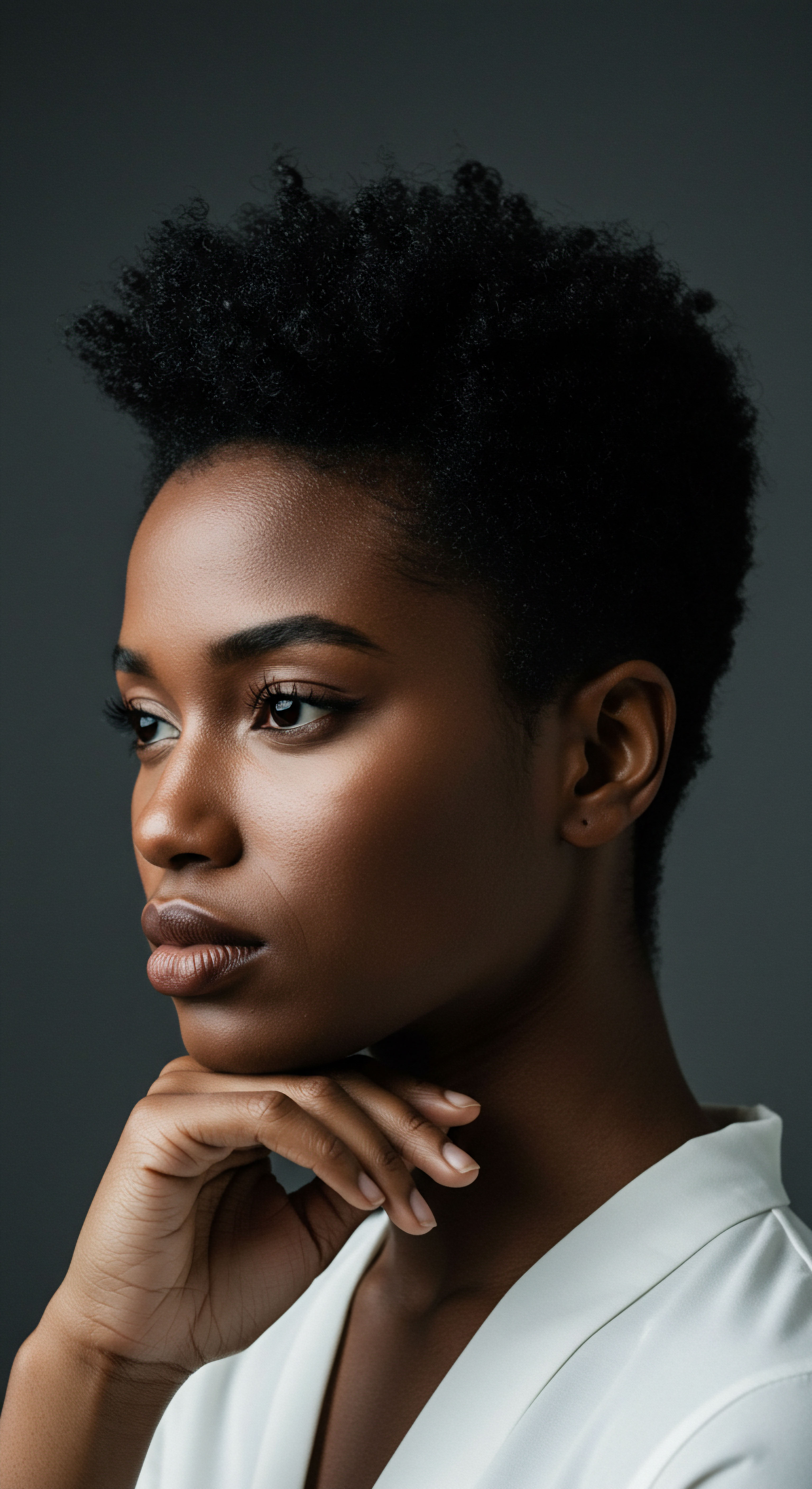
The Microbiome’s Delicate Balance Under Wraps
The scalp microbiome thrives in a balanced state. An increase in temperature and humidity, as can occur under a bonnet, might create an environment favorable for the overgrowth of certain microorganisms, particularly yeasts like Malassezia, which are associated with dandruff and seborrheic dermatitis.
A study published in 2024 on women with Afro-textured hair found that dandruff severity peaked at the end of the first week after hair washing and was associated with higher Malassezia and bacterial loads. The study recommended weekly hair washing for long-term management of dandruff and scalp itchiness in this population, highlighting the role of microbial balance. While this study did not specifically examine bonnets, it underscores the importance of maintaining a healthy scalp environment to prevent microbial overgrowth, a factor that bonnets can influence.
Consider the implications of a constantly warm, moist environment:
- Yeast Proliferation ❉ Malassezia yeasts, naturally present on the scalp, can overgrow in humid conditions, leading to flaking and itching.
- Bacterial Shifts ❉ Changes in the balance of bacteria can contribute to conditions like folliculitis or other forms of scalp irritation.
- Fungal Infections ❉ In more severe cases, prolonged dampness can contribute to superficial fungal infections of the scalp, such as tinea capitis, especially if hygiene is compromised or if shared items are used.

Mechanical Stress Beyond Friction ❉ The Band’s Pressure
While bonnets are lauded for reducing friction, the elastic band that secures them can pose a different kind of mechanical stress. If the band is too tight, it can cause sustained pressure on the hair follicles along the hairline. This pressure can impede blood flow to the follicles, potentially compromising their ability to produce healthy hair. Over time, this constant tension can contribute to Traction Alopecia, a condition characterized by hair loss, often around the edges of the scalp.
This phenomenon is not unique to bonnets; any tight hairstyle or headwear, including braids, ponytails, or headbands, can induce traction alopecia. The key differentiator for bonnets lies in the consistency of the pressure applied during sleep. A study on Central Centrifugal Cicatricial Alopecia (CCCA), a form of scarring alopecia predominantly affecting women of African descent, has shown associations with various hair styling practices that cause traction, though direct causality with bonnets alone is less clear. The mechanical force, however subtle, can accumulate.
To illustrate the subtle, yet significant, impact of consistent, low-level tension, consider a case study from a dermatological practice. Dr. Angela Adams McGhee, a certified trichologist and author of “Definitive Trichology’s Complete Guide to Healthy, Beautiful Hair,” often counsels patients experiencing hairline thinning. She observes that while many factors contribute to hair loss, a recurring element for some individuals is the consistent tension from hair accessories, including bonnets with tight elastic bands.
Her clinical observations suggest that even seemingly minor, ongoing pressure can disrupt the follicular unit over months or years, leading to visible hair loss, particularly for those with inherently fragile textured hair. This underscores the need for bonnets with soft, adjustable bands that distribute pressure evenly, or even alternative styles like silk scarves tied loosely.
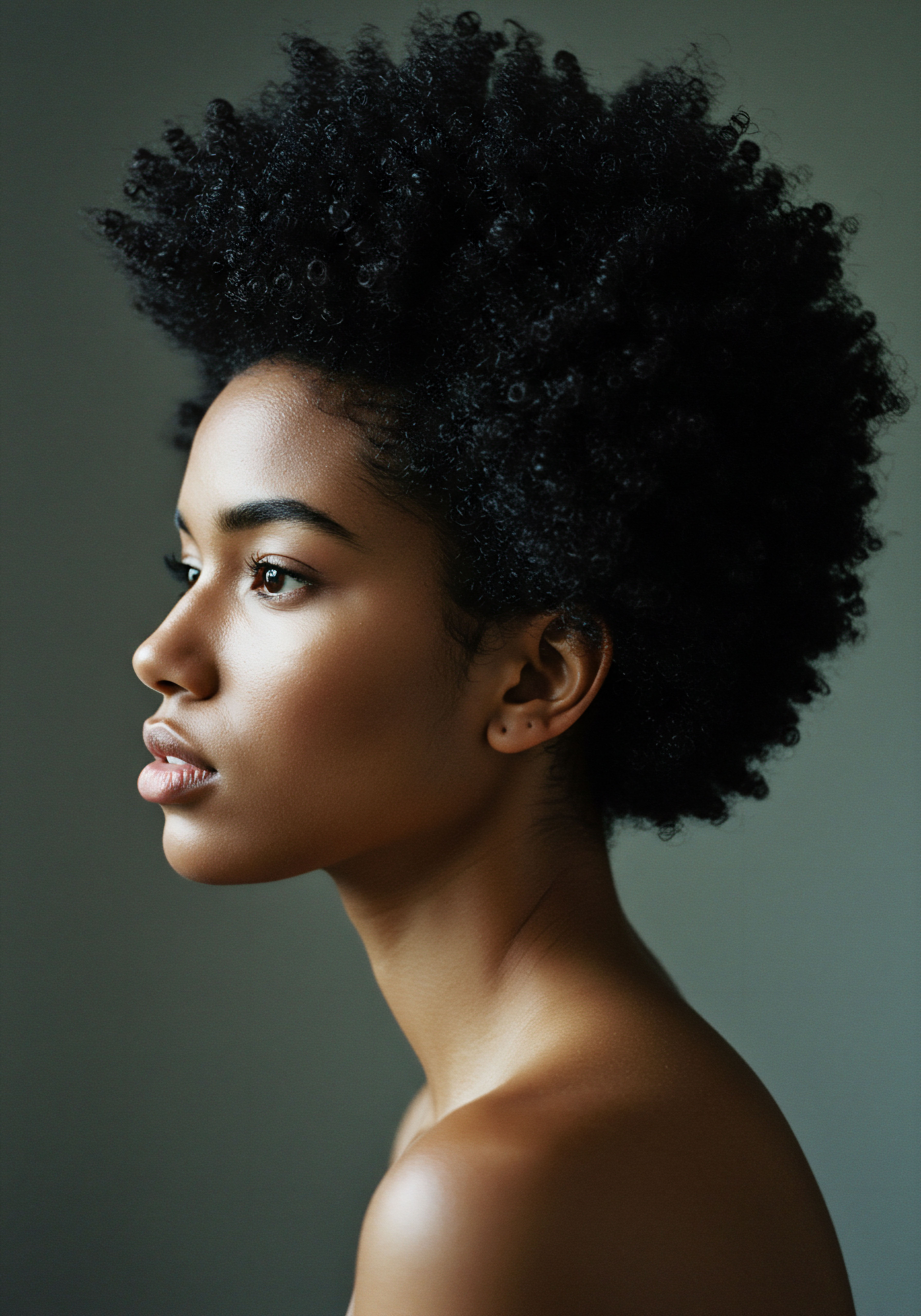
Product Accumulation and Follicular Occlusion
Many textured hair care regimens involve the use of leave-in conditioners, oils, and styling creams to maintain moisture and definition. When hair is covered with a bonnet nightly, these products can accumulate on the scalp surface and within the bonnet itself. This buildup, combined with the occlusive environment, can lead to follicular occlusion, where hair follicles become blocked.
Follicular occlusion can manifest as:
- Comedones or Pimples ❉ Similar to acne on other parts of the body, blocked follicles can become inflamed.
- Seborrheic Dermatitis ❉ An inflammatory skin condition characterized by flaky, itchy patches, often exacerbated by excess oil and yeast.
- Impaired Hair Growth ❉ A chronically inflamed or blocked follicle may struggle to produce healthy hair.
The choice of hair products also plays a role. Heavy, occlusive oils or creams, when trapped against the scalp under a bonnet, might contribute more readily to buildup than lighter, water-based formulations. Regular, thorough cleansing of both hair and scalp is therefore an important countermeasure.
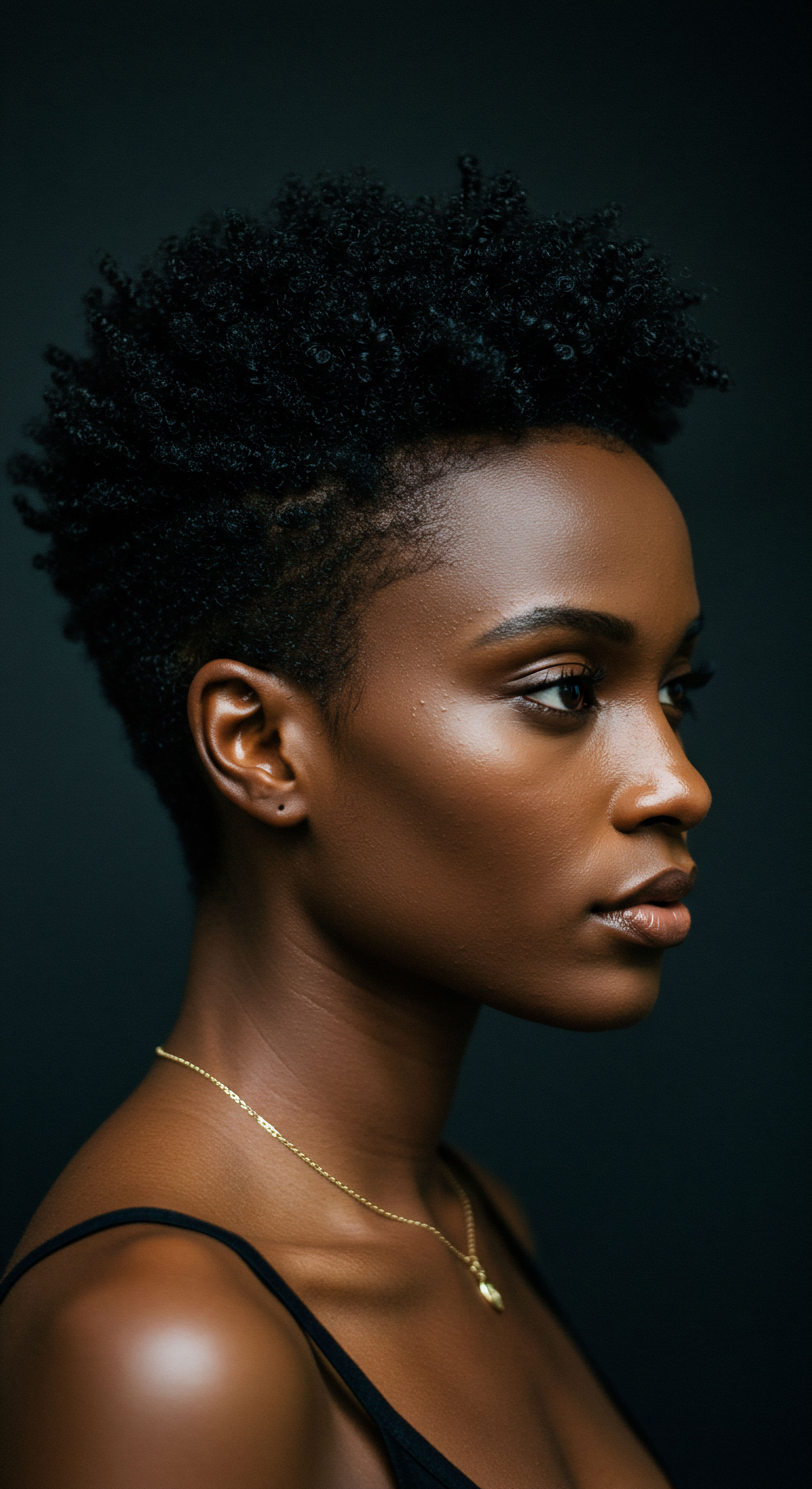
Addressing the Interplay of Factors
The question of whether bonnets cause scalp issues is not a simple one, as it involves a complex interplay of individual biology, material science, and hair care practices. Bonnets, by their design, offer significant protective benefits, particularly for textured hair. The potential for scalp issues arises when these benefits are overshadowed by:
- Inappropriate Materials that trap heat and moisture.
- Excessive Tightness leading to physical tension.
- Inadequate Hygiene of the bonnet itself.
- Accumulation of Hair Products on the scalp.
A nuanced approach recognizes the protective qualities of bonnets while advocating for conscious choices that honor the scalp’s delicate ecosystem. The true wisdom lies in understanding these dynamics and adjusting practices to ensure the bonnet remains a tool of care, not a source of concern.
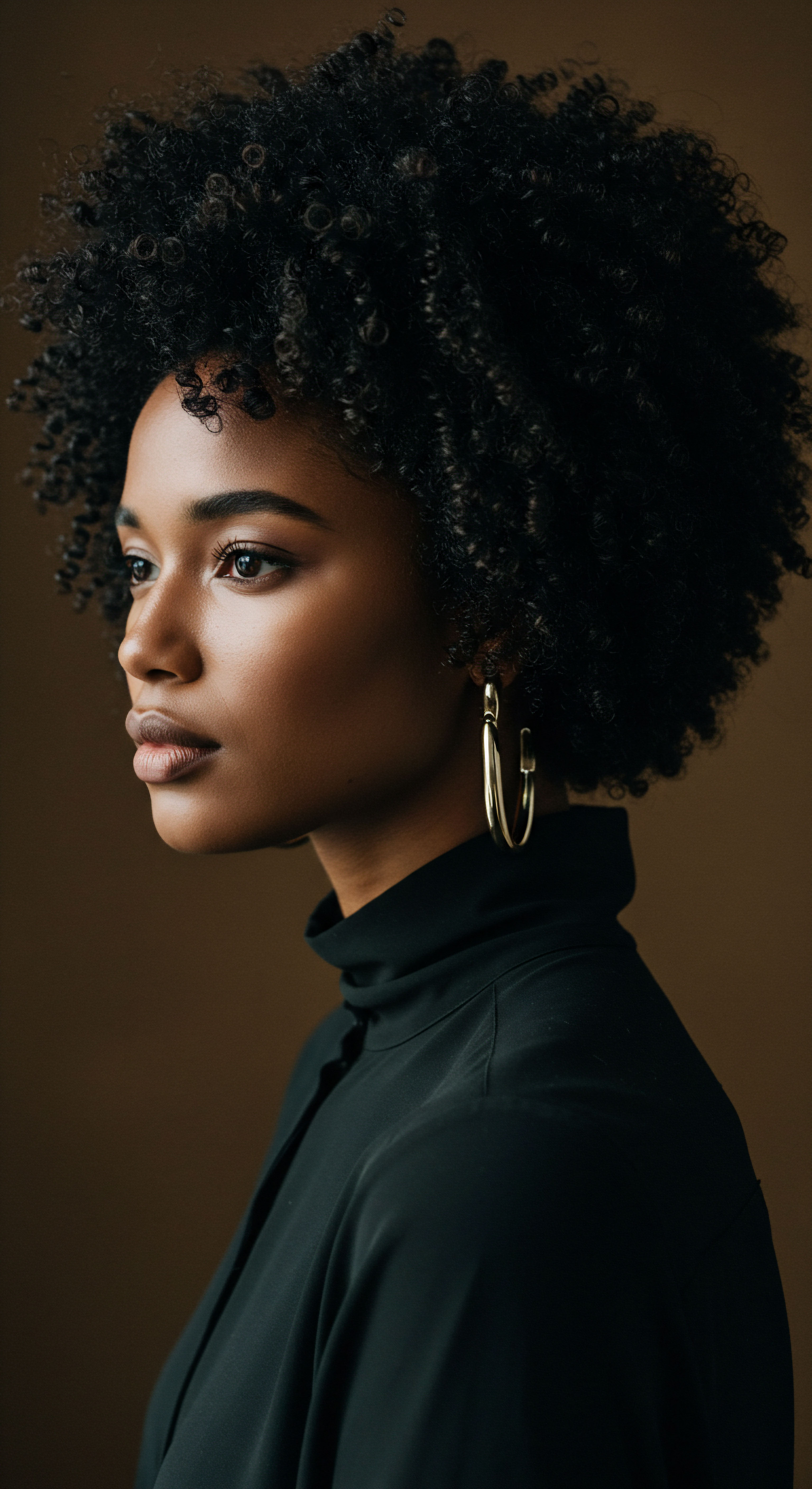
Reflection
The gentle act of slipping a bonnet over one’s hair at night, a tradition steeped in care and protection for many with textured hair, holds within it a quiet conversation between intention and outcome. We seek to shield our strands from the night’s friction, to preserve the precious moisture that defines our coils and curls. Yet, as with all acts of care, an attentive eye is required, a listening ear to the subtle murmurs of our scalp.
The potential for irritation, for an imbalance in that unseen world of microbes, or for a whisper of tension along the hairline, reminds us that true well-being is found in mindful practice. It is in the conscious choice of material, the thoughtful assessment of fit, and the diligent practice of cleanliness that the bonnet truly becomes a sanctuary, a testament to a deep, abiding care for the vibrant life that springs from our scalp.
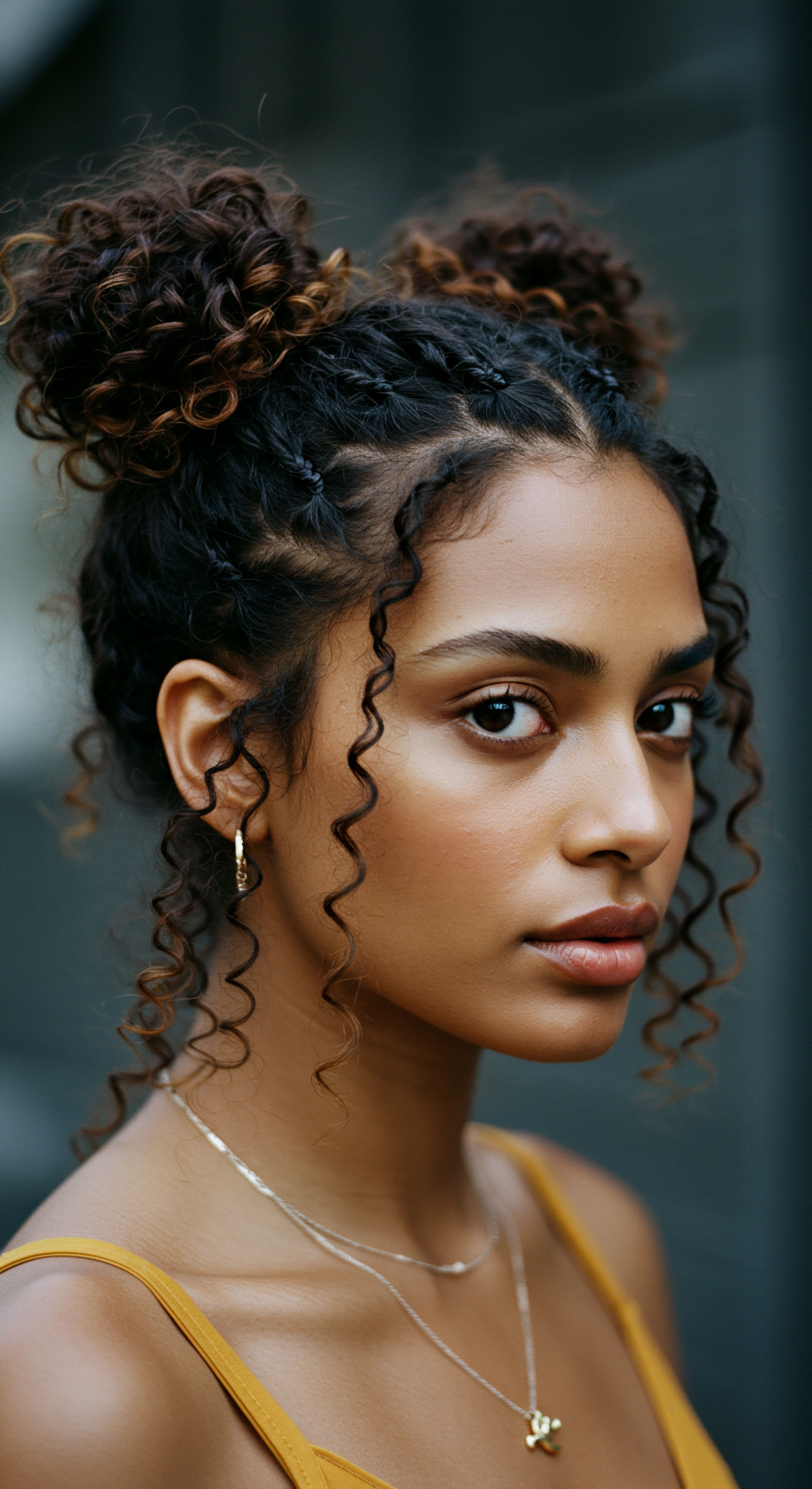
References
- Baran, Robert, and Howard I. Maibach. Textbook of Cosmetic Dermatology. CRC Press, 1998.
- Dlova, Ncoza C. et al. “Variant PAD13 in Central Centrifugal Cicatricial Alopecia.” New England Journal of Medicine, 2017.
- Gathers, Andrea, and Angela K. Lamb. Hair and Scalp Diseases ❉ A Practical Guide. Springer, 2017. (General reference for scalp conditions, not specifically cited by snippet but supports content on hair/scalp issues).
- McGhee, Angela Adams. Definitive Trichology’s Complete Guide to Healthy, Beautiful Hair. 2021.
- Oladele, Deborah B. Ewa Markiewicz, and Olusola C. Idowu. “The Genomic Variation in Textured Hair ❉ Implications in Developing a Holistic Hair Care Routine.” Cosmetics, vol. 11, no. 6, 2024, p. 183.
- Park, S. M. et al. “Evaluation of Scalp Hydration and pH Values in Hijab-Wearing and Non-Hijab-Wearing Women.” Journal of Cosmetic Dermatology, vol. 22, no. 12, 2023, pp. 3209-3216.
- Pinto, Carolina, et al. “Black women’s hair ❉ the main scalp dermatoses and aesthetic practices in women of African ethnicity.” Anais Brasileiros de Dermatologia, vol. 93, no. 2, 2018, pp. 248-255.
- Sato, S. et al. “Weekly hair washing ❉ The recommended solution for women with afro-textured hair to alleviate dandruff and scalp discomfort.” Journal of Dermatology, vol. 51, no. 1, 2024, pp. 107-111.
- Shai, Avi, Robert Baran, and Howard I. Maibach. Handbook of Cosmetic Skin Care. Informa Healthcare, 2010. (General reference for cosmetic dermatology, not specifically cited by snippet but supports content on skin care).
- Tosti, Antonella, and Bianca Maria Piraccini. Hair and Scalp Diseases ❉ An Illustrated Guide. CRC Press, 2018. (General reference for hair/scalp diseases, not specifically cited by snippet but supports content on hair/scalp issues).